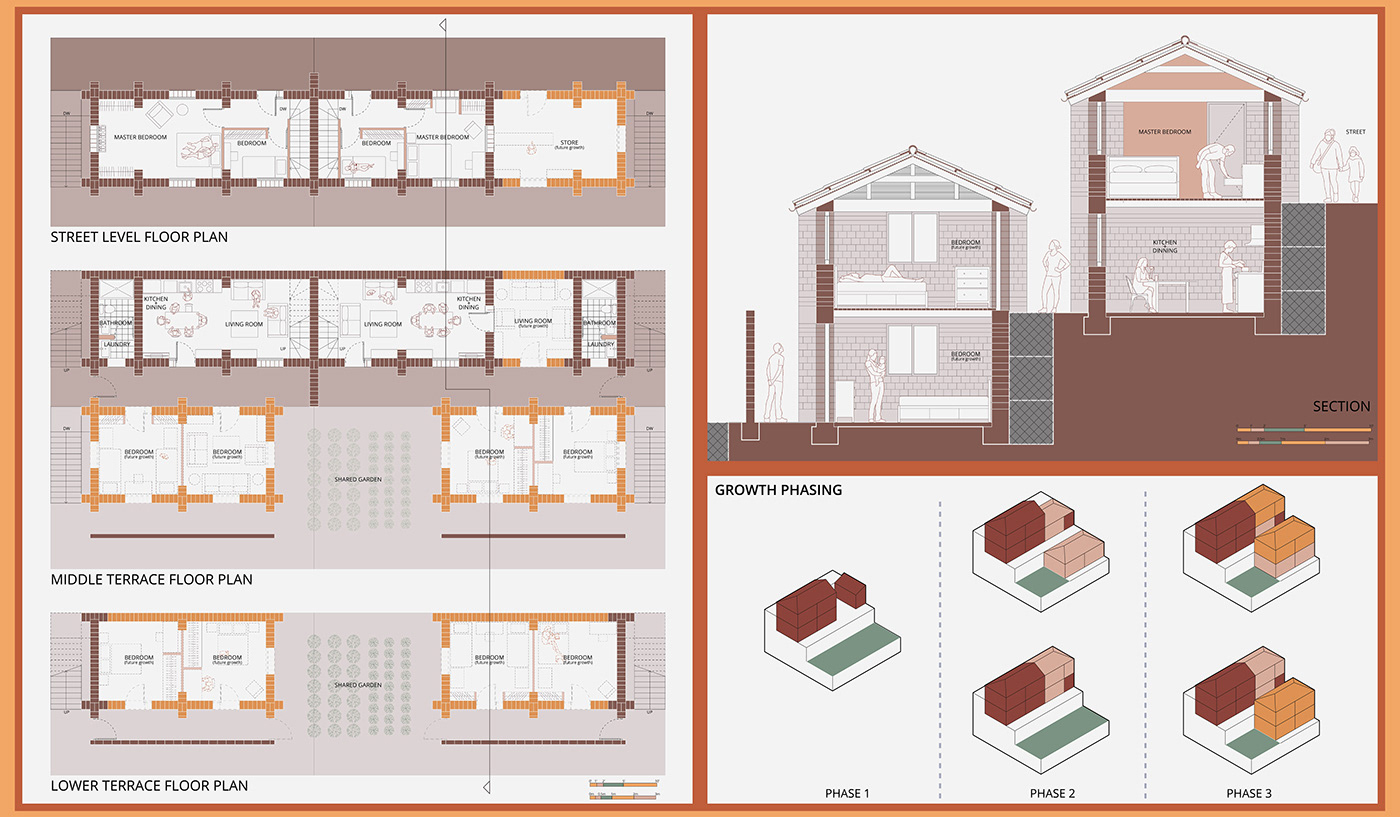
To improve the housing crisis of a settlement in Cusco, Peru, interventions at three different scales – urban, housing unit, community – are proposed. Adobe is used as the construction material along with some modifications to traditional construction methods to improve the structural soundness of these structures. The visual language refers to local traditional tapestries to weave all the three scales of intervention into a coherent proposal.

The final site plan weaves the topography lines into the existing site and uses them as pedestrian streets. The individual housing lots and public/community areas are weaved together through the use of patterns created by the ground and roofscapes.

The proposed housing units use adobe, a sun-dried brick made of sand, clay, water and natural straw. Benefits of this material are that it is environmental friendly, it is affordable, but most of all, it speaks of the collective memory of the people of the area. However, traditional construction methods with adobe lack structural soundness and this thesis proposes a series of improvements to address this issue. Buttressed corners, and a concrete tier beam will help to make adobe houses safer.

The concept of incremental growth is used as way to deal with the local common custom of multigenerational housing. Families are provided a lot with an initial constructed area with room for the families themselves to add more spaces to their houses as their families grow.

The thesis proposes two types of housing. 'Housing Type 1' is arranged in blocks of four lots to bring back the courtyard condition that once permeated the city. 'Housing Type 2' is used to deal with steeper topographic drops and it provides direct access to both public stairs and shared spaces. All of these typologies are arranged in neighborhood areas, where the goal is to create pedestrian-only streets and a space for people to share a sense of community.

A community center is designed to provide the families a place for gathering and meeting. This community center is proposed to be the first piece of architecture to be build since it is here that the local builders will be trained in the new construction methods that will later be used to expand their homes.

ACKNOWLEDGEMENTS
I want to thank everyone who supported me throughout this journey.
To professors Vincent Sansalone, Michael McInturf, Ed Mitchell, and Andrew Tetrault. Who were key advisors in the development of this thesis.
To my M1 friends, who provided me their invaluable company and friendship.
To my parents and siblings, who, despite the long physical distance in between, were always close to me in my heart. They gave me the strength to continue in the hardest moments and it is them that have motivated me to give my best. This work is entirely dedicated to them.
CONTACT INFORMATION
Email: peterloayza3996@hotmail.com
LinkedIn: www.linkedin.com/in/peterloayza39
Portfolio: https://issuu.com/peterloayza39/docs/portfolio_peter_loayza_issuu
THANK YOU!
